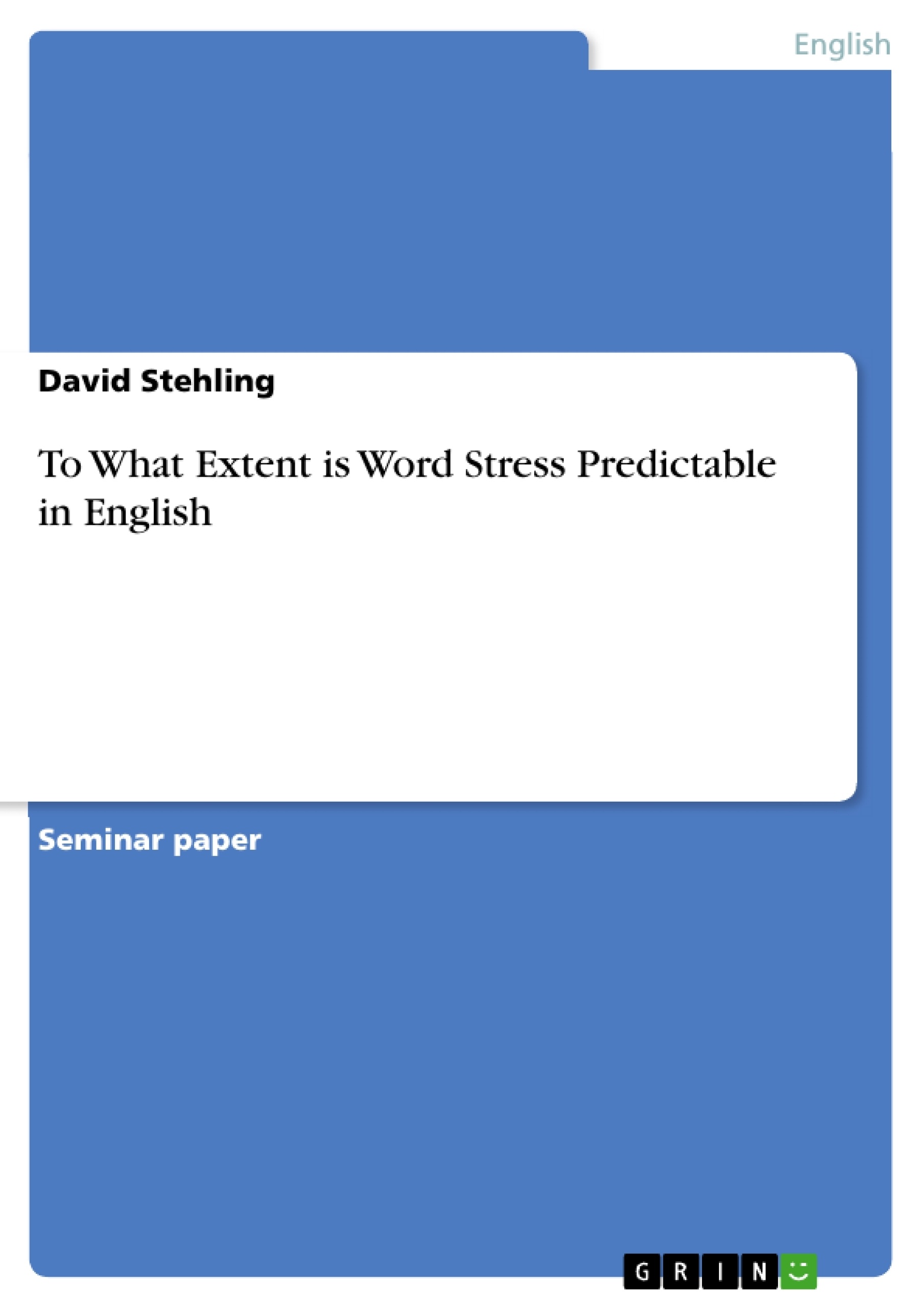In many languages word stress is quite predictable: in Czech the first syllable of a word always carries the main stress. In French the ultimate syllable is the most prominent each time. The penultimate syllable is constantly stressed in Polish. As can be seen, there are strict general rules with respect to a word’s stress. In English, however, the stressing of a lexeme appears to be arbitrary rather than following certain stress rules. The spelling does not indicate a word’s pronunciation, let alone its stress. Moreover, the stress may even differ within the same word. Thus, thir'teen can be stressed on the last syllable, but in an environment of another word, e.g. 'thirteen 'pints, it can also be pronounced with a prominent first syllable in order to keep eurhythmy. Nevertheless, it looks like native speakers have a perceptual ability to say how many syllables a word has and to tell which syllable receives the most stress. Therefore, Carr (1999) considers three trisyllabic non-English words: Gigondas, Zaventem and tavola. The author points out that English speakers always tend to stress the penultimate syllable mispronouncing each of theses words. Why do speakers with English as their mother tongue react in this way? Is this a proof of generalisation and existing stress patterns? In this essay it is discussed whether the primary stress of singular words has to be learned, e.g. like their spelling or the sequence of their phonemes, or if the stressing of a lexeme follows internalized rules (due to a lack of space, secondary stress shall be excluded here). For a more concise analysis of the issue, three main bases concerning primary stress patterns are examined: the syntactic, morphological and phonological information of a word.
Inhaltsverzeichnis (Table of Contents)
- To What Extent is Word Stress Predictable in English?
- Phonological Information
- Syntactic Information
- Nouns
- Verbs
- Adjectives
- Morphological Information
Zielsetzung und Themenschwerpunkte (Objectives and Key Themes)
This essay explores the predictability of word stress in English. It investigates whether word stress is learned like spelling or phonemes, or if it follows internalized rules. The essay examines three main bases concerning primary stress patterns: phonological, syntactic, and morphological information.
- The role of syllable weight in determining word stress
- The influence of syntactic category on stress placement
- Generalisations and tendencies regarding stress patterns in nouns, verbs, and adjectives
- The existence of exceptions to stress rules and the limitations of predictability
- The interplay of different linguistic levels in determining word stress
Zusammenfassung der Kapitel (Chapter Summaries)
The essay begins by discussing the predictability of word stress in various languages, highlighting the contrasting situation in English. It then delves into phonological information, explaining the concept of syllable weight and its impact on stress. The essay explores the relationship between syllable weight and stress placement, noting that while light syllables are consistently unstressed, heavy syllables do not always carry stress.
The next section focuses on syntactic information, arguing that grammatical function influences stress assignment. The essay examines the stress patterns in different word classes, particularly nouns, verbs, and adjectives, revealing tendencies but also limitations in predicting stress based on syntactic category alone.
Schlüsselwörter (Keywords)
Word stress, English phonology, syllable weight, syntactic category, stress patterns, predictability, exceptions, generalisations, nouns, verbs, adjectives.
- Quote paper
- David Stehling (Author), 2009, To What Extent is Word Stress Predictable in English, Munich, GRIN Verlag, https://www.grin.com/document/205521




